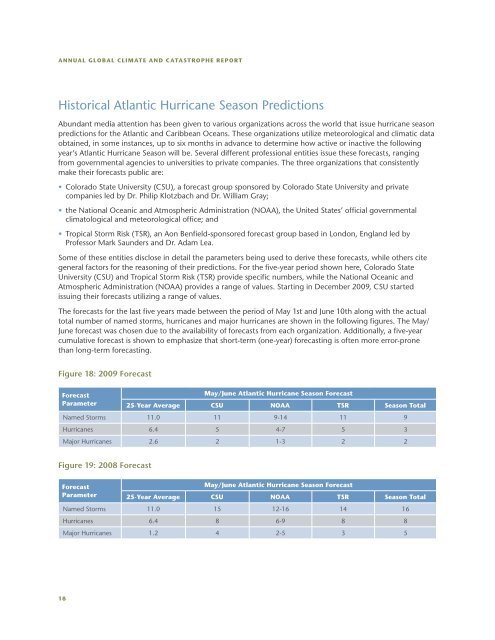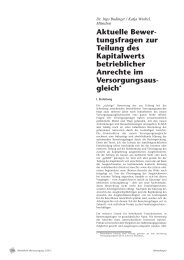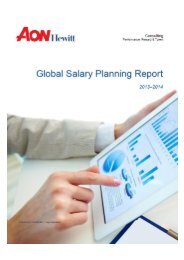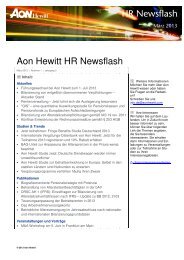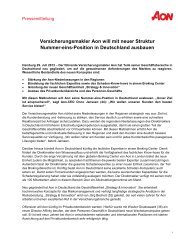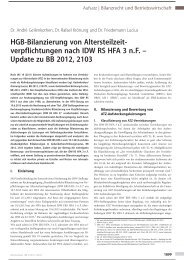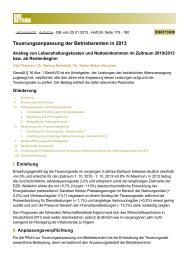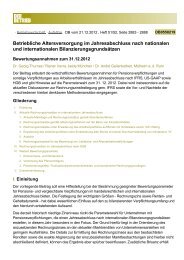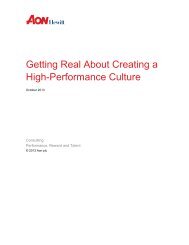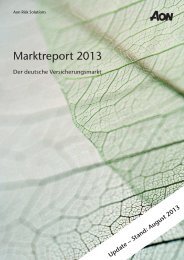Annual Global Climate and Catastrophe Report: Impact ... - Aon
Annual Global Climate and Catastrophe Report: Impact ... - Aon
Annual Global Climate and Catastrophe Report: Impact ... - Aon
Create successful ePaper yourself
Turn your PDF publications into a flip-book with our unique Google optimized e-Paper software.
AnnuAl GlobAl Cli mAte And C AtAstroph e r e port<br />
Historical Atlantic Hurricane Season Predictions<br />
Abundant media attention has been given to various organizations across the world that issue hurricane season<br />
predictions for the Atlantic <strong>and</strong> Caribbean Oceans. These organizations utilize meteorological <strong>and</strong> climatic data<br />
obtained, in some instances, up to six months in advance to determine how active or inactive the following<br />
year’s Atlantic Hurricane Season will be. Several different professional entities issue these forecasts, ranging<br />
from governmental agencies to universities to private companies. The three organizations that consistently<br />
make their forecasts public are:<br />
• Colorado State University (CSU), a forecast group sponsored by Colorado State University <strong>and</strong> private<br />
companies led by Dr. Philip Klotzbach <strong>and</strong> Dr. William Gray;<br />
• the National Oceanic <strong>and</strong> Atmospheric Administration (NOAA), the United States’ official governmental<br />
climatological <strong>and</strong> meteorological office; <strong>and</strong><br />
• Tropical Storm Risk (TSR), an <strong>Aon</strong> Benfield-sponsored forecast group based in London, Engl<strong>and</strong> led by<br />
Professor Mark Saunders <strong>and</strong> Dr. Adam Lea.<br />
Some of these entities disclose in detail the parameters being used to derive these forecasts, while others cite<br />
general factors for the reasoning of their predictions. For the five-year period shown here, Colorado State<br />
University (CSU) <strong>and</strong> Tropical Storm Risk (TSR) provide specific numbers, while the National Oceanic <strong>and</strong><br />
Atmospheric Administration (NOAA) provides a range of values. Starting in December 2009, CSU started<br />
issuing their forecasts utilizing a range of values.<br />
The forecasts for the last five years made between the period of May 1st <strong>and</strong> June 10th along with the actual<br />
total number of named storms, hurricanes <strong>and</strong> major hurricanes are shown in the following figures. The May/<br />
June forecast was chosen due to the availability of forecasts from each organization. Additionally, a five-year<br />
cumulative forecast is shown to emphasize that short-term (one-year) forecasting is often more error-prone<br />
than long-term forecasting.<br />
Figure 18: 2009 Forecast<br />
forecast<br />
parameter<br />
18<br />
may/June Atlantic hurricane season forecast<br />
25-Year Average Csu noAA tsr season total<br />
Named Storms 11.0 11 9-14 11 9<br />
Hurricanes 6.4 5 4-7 5 3<br />
Major Hurricanes 2.6 2 1-3 2 2<br />
Figure 19: 2008 Forecast<br />
forecast<br />
parameter<br />
may/June Atlantic hurricane season forecast<br />
25-Year Average Csu noAA tsr season total<br />
Named Storms 11.0 15 12-16 14 16<br />
Hurricanes 6.4 8 6-9 8 8<br />
Major Hurricanes 1.2 4 2-5 3 5


